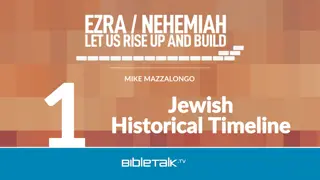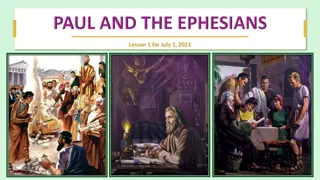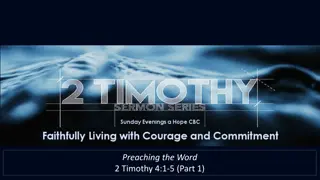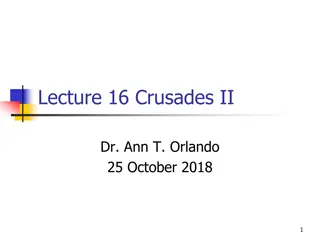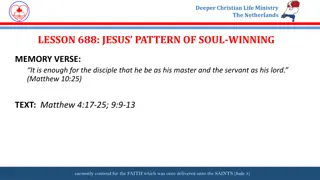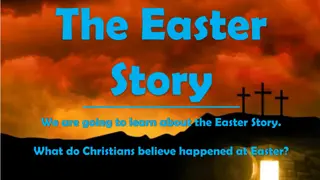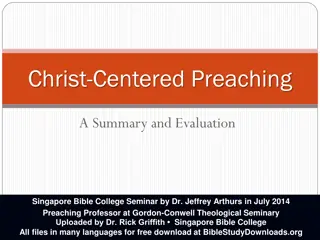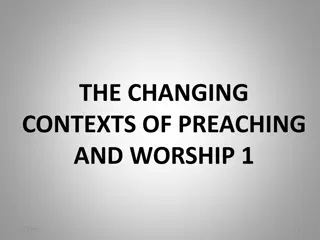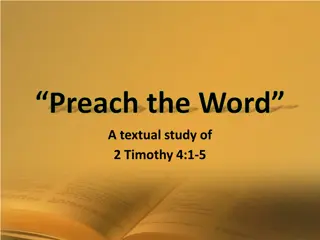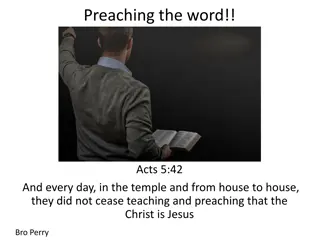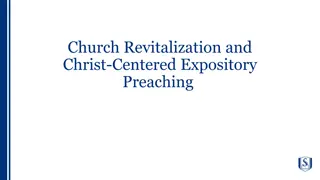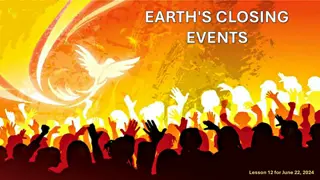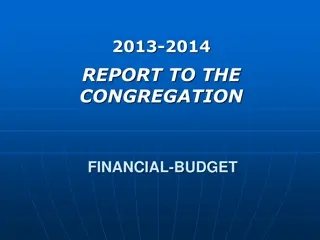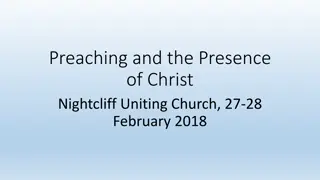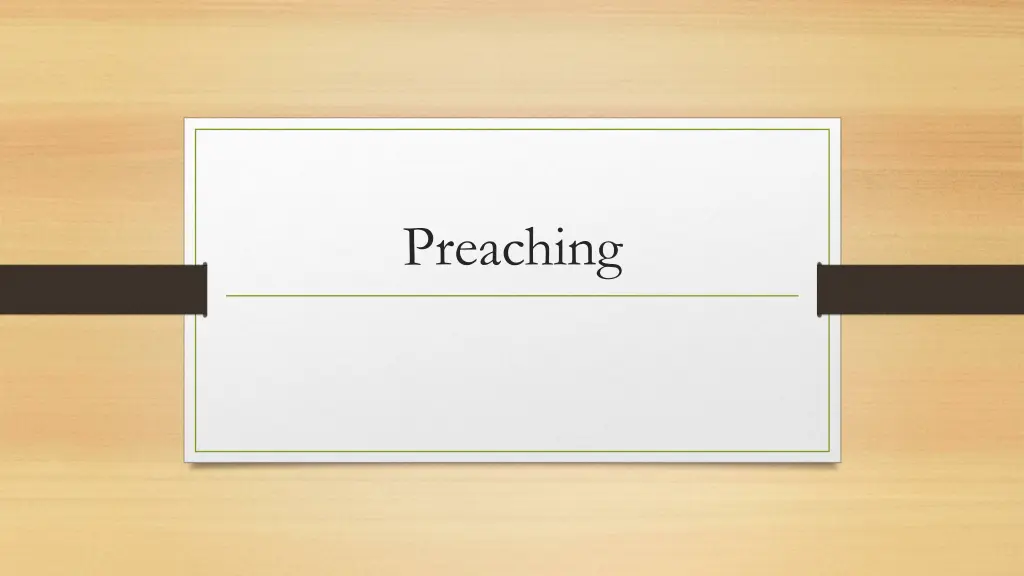
Unveiling the Exegetical Process of Black Preaching
Explore the intricate steps of the exegetical process in Black preaching, from encountering the biblical text to crafting a sermon. Delve into the roots of African American preaching, Holy Spirit inspiration, and the celebration that follows. Witness the journey from close reading to contextual understanding, culminating in the powerful expression of truth in sermons.
Uploaded on | 0 Views
Download Presentation

Please find below an Image/Link to download the presentation.
The content on the website is provided AS IS for your information and personal use only. It may not be sold, licensed, or shared on other websites without obtaining consent from the author. If you encounter any issues during the download, it is possible that the publisher has removed the file from their server.
You are allowed to download the files provided on this website for personal or commercial use, subject to the condition that they are used lawfully. All files are the property of their respective owners.
The content on the website is provided AS IS for your information and personal use only. It may not be sold, licensed, or shared on other websites without obtaining consent from the author.
E N D
Presentation Transcript
What is Preaching? What is Black Preaching? Preaching: Speaking God s Truth African American Preaching Biblically Rooted Experienced Exegetical Holy Spirit Inspired Suspense leads to Celebration Embodied
Exegetical Process Step 1: Begin at Home Step 2: Encounter the Biblical Text Step 3: Close Reading of the Text Translations Outline Terms/Characters/Ideas Step 4: Reading Contextually Literal, Social, Cultural Context Step 5: Engage Commentaries Step 6: Working Toward the Sermon Step 7: Write the Sermon!
Step 1: Begin at Home Select a Text Reconsider where the text begins and ends Establish a reliable translation of the text Assess what you bring to the text
Step 2: Encounter the Biblical Text Read the text for basic understanding Are there words I need to research? What do I understand? What do I not understand? What pops out at you? Where is the tension in the text? Place the Text in Larger Context Is this pericope part of a bigger story? What is happening before and after this text?
Step 3: Close Reading of the Text Listen Attentively to the Text Ask critical questions Identify inconsistencies in the text Write a paraphrase Stand in the shoes of the biblical character Look for details that appear unusual or out of place, conflict Locate Center gravity What questions does the text answer?
Step 4 & 5: Reading Contextually Explore the text historically What is the history in the text and the history of the text? Explore the literary character and genre of the text Explore the text theologically Discern what theological claims are present in the text regarding God-in-relation-to-humanity Check the text in the commentaries Choose at least two (2) commentaries
Step 6: Working Towards the Sermon Write a one-sentence responses to each of the following question. The skill with which you craft these three statements will determine, in large part, the communicability and accessibility of your sermon. In one sentence each, write the 1. The Sermon Claim 2. The Sermon Focus 3. The Sermon Function Write one-page explication of your focus and function that articulates how you intend to shape the sermon. How will the sermon clearly communicate what the sermons wants to say and the response to which the sermon invites the community?
Rules for Commentaries Bring your own opinions to the commentary Bring your questions to the commentary Bring out a variety of commentaries
List of Commentaries & Resources True to our Native Land by Brian Blout & Cain Hope Felder Strong's Concordance of the Bible Women s Bible Commentary by Carol A. Newsom The New American Commentary Warren Wiersbe Be Series Online Bible Dictionary & Scholarly Articles www.bibleodyssey.org/ Greek/Hebrew Bible www.blueletterbible.org/
Preaching Function: What does the sermon aim to do? Focus: What does the sermon aim to say? Proposition: The sermon in one sentence
Sermon Questions How can we get the gospel to be relevant to people s lives How can we assist people to experience truth rath than just intellectualize it? How can we involve the listener in the sermonic process? How can we get the gospel to appeal beyond the rational aspects of ourselves? How can we get the gospel heard in depth, and made effective in the practical everyday life of the listener?
Sermon Structure Commencement Grab the attention of the audience. Relate to them. May include story, facts, definitions, allusion to the theme/topic Context Dive into the biblical text Content Relate biblical text to applicable/practical points Celebration Culminate with an insightful close. Tie it all together.
Celebration Celebration is the Culmination of the sermonic design, where a moment is created in which the remembrance of a redemptive past and/or the conviction of a liberated future transforms the events immediately experienced. Your celebration should reflect you You do not have to whoop You do not have to get loud Bring the audience to a moment where we are over assured, encouraged, lifted, empowered a call to action give them a sense that I can go a do _______
Guidelines for Celebration No new concepts Contagious conviction Affirmative Themes Focus on the Theme Timing Impact

